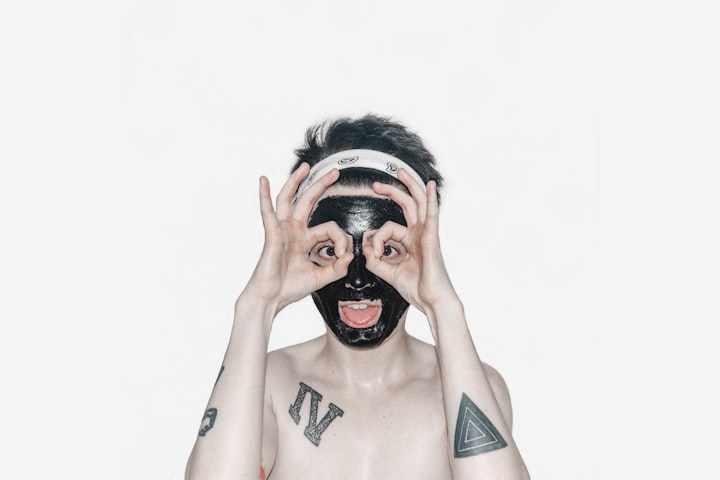Invest in your Skin
Best anti-aging phyto-extracts that keep your skin looking young
Phyto-antioxidants
The kingdom of the plants — the phyto-kingdom — is rich in natural endogenous antioxidants, the phyto-antioxidants, that exhibit a wide range of biological effects, such as anti-inflammatory, antibacterial, antiviral, anti-aging and anticancer. These natural antioxidants are mainly terpenes (aromatic molecules responsible for the unique aroma of each plant), polyphenols (phenolic acids, flavonoids, anthocyanins, lignans and stilbenes), carotenoids (xanthophylls and carotenes) and vitamins (vitamin E and C).
In particular, the antioxidants are capable of scavenging the reactive species of oxygen (ROS). ROS are chemically reactive species containing oxygen — such as peroxides, superoxide, hydroxyl radical, singlet oxygen and alpha-oxygen — generated during a variety of biochemical reactions within the cell organelles — such as mitochondria, peroxisomes, and endoplasmic reticulu — or they may be stimulated by a variety of agents such as pollutants, heavy metals, smoke, xenobiotics or radiation.
All living systems have the capability to maintain homeostasis of ROS through a complex antioxidant defense system comprising:
- endogenous antioxidants (enzymatic i.e. superoxide dismutase, glutathione peroxidase and catalase or non-enzymatic i.e. metal binding proteins, glutathione, uric acid, melatonin, bilirubin, polyamides), and
- natural exogenous (consumed) antioxidants (phyto-antioxidants).
A balance between antioxidants and ROS in our body is important for health. But when an imbalance between ROS production and the above mentioned antioxidant defences arises, then we have oxidative stress and ROS lead to cell damage linked to a variety of chronic diseases. In fact, according the oxidative stress theory of aging the age-associated functional losses in our organs are due to the accumulation of ROS-induced damages everywhere in our body, including our skin.
So, today I summarize various in vivo antioxidant studies on herbal creams — loaded with phyto-extracts rich in phyto-antioxidants — that may serve as cosmeceuticals to protect our skin from oxidative stress.
Phyto-extract Loaded Creams

Recent research indicates that due to the presence of numerous bioactive ingredients in phyto-extracts, the creams loaded with phyto-extracts are considered more efficacious — and with lesser side effects — against aging in comparison to skin creams loaded with specific individual antioxidants:Anti-Aging Potential of Phytoextract Loaded-Pharmaceutical Creams for Human Skin Cell Longetivity.
Some of these plants that keep your skin looking young are:
Benincasa hispida (commonly known as wax gourd, Japanese name Tougan)
The fruit of this plant is effective for different diseases including cardiac disease, diabetes, inflammation — due to inhibitory activity on the histamine release from rat exudate cells induced by antigen-antibody reaction — and cancer. When a cream was prepared with the dry extract from Benincasa fruit extract and was tested by application to the stratum corneum of human cadaver skin the results indicated that the cream could be used for retarding the symptoms of aging, since it had skin renewal activity.
Calendula officinalis (known as pot marigold)
The water-in-oil cream of flower extract of Calendula officinalis exhibited aptitude of stimulating skin tightness and improved skin elasticity leading to delayed aging process. Moreover, this preparation enhances the skin hydration level, as evident from reduced TEWL values — a measure of the rate of water lost through the skin — which is crucial for normal cutaneous metabolism. In addition, the reduction in skin melanin contents and the decrease in skin sebum level were also observed after application of this formulation.
Camellia sinensis (common name tea plant)
The water-in-oil cream loaded with ethanolic leaf extract of Camellia sinensis significantly reduced the sebum production and in another study it was reported that the skin hydration level was improved after using this formulation.
Furthermore, a nano-multiple emulsion containing alcoholic extracts of green tea leaves and Nelumbo nucifera (known as Indian lotus or sacred lotus) plant, was formulated and tested on human skin. Both extracts were found to have diminished sebum secretions after applying the formulations to volunteers’ skin. Green tea plus lotus together produced statistically better antisebum effect.
This indicates that active ingredients in lotus add a synergistic effect to the activity of green tea that can be attributed to the inhibition in activity of 5α-reductase — an enzyme important for sebum production — found in both extracts.
Sebum is produced by sebaceous glands, and sebum production is under the control of sex hormones (androgens). The most active androgens are testosterone, 5-testosterone (DHT) and 5-androstene-317diol. Androgens are made more active by enzymes in the skin and sexual organs: such as type 1 5α-reductase acting in the skin and type II 5α-reductase acting in the sexual organs. These enzymes convert less active androgens into the active testosterone and DHT. Then, these more active androgens stimulate sebaceous gland cells to produce more sebum.
Zinc compounds, polyphenolics, flavonoids, tannic acid, and linoleic acid are excessively found in lotus. Linoleic acid and (-) epigallocatechin-3-gallate (EGCG) they both have an advantage of inhibiting sebum production due to their 5α-reductase inhibition activity. Moreover, it is now clear that the green tea catechin EGCG, can modulate the production and biological actions of androgens and other hormones, therefore administration of EGCG may be useful for the treatment of various hormone-related abnormalities, such acne.
Coffea arabica (also known as the Arabian coffee)
A skin care system containing Coffea arabica extract was prepared and tested in order to evaluate its effects on fine lines, wrinkles, pigmentation, and gene expression (collagen I, collagen IV, matrix metalloproteinase (MMP)-1, and IL-1β). In general, the adverse effects of UV radiation on the skin are associated with induction of matrix metalloproteinases (MMPs) expression and degradation of collagen and elastin.
Interestingly, the results of the study showed reduced levels of MMP-1 and IL-1β and improvements in fine lines, wrinkles and pigmentation. Moreover, gene up-regulation of four collagen structural proteins and gene down-regulation of three MMPs was also observed concluding reparative effects of Coffea arabica extract upon photoaged skin.
In another study investigating the potential effects of three compounds isolated from Coffea arabica — chlorogenic acid (CGA), pyrocatechol (PC) and 3,4,5-tricaffeoyl quinic acid (TCQ) — against UV-B induced skin damage, it was found:
- an in vitro anti-wrinkle effect of CGA, PC and TCQ,
- that CGA down-regulates MMP-1, 3, and 9 expressions,
- that type-I procollagen level is up-regulated by CGA, and
- that CGA protected DNA damage induced by ROS production.
Emblica officinalis (known as Amla)
Emblica officinalis is arguably one of the most important plants in various traditional and folk systems of medicine in India. All parts of this plant, from root to fruit, are medicinally effective in different health problems; for example, diarrhea and jaundice are effectively treated by using this plant.
The hydroalcoholic fruit extract of Emblica officinalis has been formulated as water-in-oil cream and it was found to be effective for reducing transepidermal water loss. Since transepidermal water loss plays crucial role in aging process this formulation can be employed as an anti-aging product.

Foeniculum vulgar (known as Florence fennel or finocchio)
A water-in-oil emulsion based cream loaded with ethanolic extract of Foeniculum vulgare seeds and used for eight months, reduced transepithelial water loss and improved skin mechanical properties, that is, reduced levels of roughness, scaliness, smoothness and wrinkles of photoaged skin.
In another study, when the same formulation was applied on hyperpigmented human skin they observed decreased melanin level, sebum production, and erythema of the treated skin. The decrease in skin melanin level leads to skin-whitening effect.
Beside flavonoids, they attributed this effect to linoleic acid present in the used extract — an unsaturated fatty acid that is a main constituent of biological cell membranes — that has also an advantage of accelerating the process of tyrosinase degradation — tyrosinase is a copper-containing enzyme present in plant and animal tissues that catalyzes the production of melanin and other pigments from tyrosine — resulting in reduced melanin synthesis due to low tyrosinase levels.
Furthermore, this cream may be useful for skin acne due to its diminishing effect on skin sebum level. Oleic acid, linolenic acid and linoleic acid, present in Foeniculum vulgare extract, could be responsible for this effect since these unsaturated fatty acids have inhibitory effect on sebum production owing to selective inhibition of 5α-ereductase involved in the production of sebum.
Hippophae rhamnoides (known as sea-buckthorn)
Khan et al. reported the improvement in facial skin mechanical parameters — for example, skin elasticity — indicating anti-aging effect after using water-in-oil based hydroalcoholic cream loaded with fruit extract of Hippophae rhamnoides.
The possible anti-aging effect was pointed out as a feature of antioxidants such as carotene, particularly β-carotene, vitamin C and vitamin E present in extract. In particular, Vitamin C occurs in a concentration of 28–2500 mg/100 g of Hippophae rhamnoides extract and plays a role in the stimulation of dermal fibroblasts to synthesize collagen which is responsible for holding water contents in skin (vitamin C is known to regulate the synthesis of the structural protein collagen).
Moreover, the Hippophae rhamnoides extract affects skin mechanical properties through:
- increased expression of cell surface integrins — proteins that function mechanically by attaching the cell cytoskeleton to the extracellular matrix — that promote collagen contraction,
- increased skin hydration level,
- reduced skin melanin levels and erythema, and
- reduced antisebum secretion effect.
Moreover, the extracts of Hippophae rhamnoides and Cassia fistula (known as golden shower, purging cassia, Indian laburnum, or pudding-pipe tree) were also found effective in the reduction of skin sebum content (antiacne effects) in human with grade I and grade II acne vulgaris.
Matricaria chamomilla (known as chamomile)
Skin treatment with water-in-oil emulsion based cream loaded with hydroalcoholic extract of Matricaria chamomilla plant for eight weeks, reduced transepithelial water loss. The transepithelial water loss indicates disruption of the stratum corneum and loss of intercellular lipids, accordingly this formulation possibly repairs the stratum corneum and improves the moisture contents in human skin.
Moreover, there was an improvement in skin mechanical properties such as diminished levels of roughness, scaliness, smoothness and wrinkles of photoaged skin. The investigators attributed this anti-aging activity to the phenolic compounds present in extract:
- terpenes — terpene administration directs patterns of gene expression that support increased keratinocyte proliferation, keratin production, reduced inflammation, and protection from oxidative damage within the stratum corneum and related epidermal structures,
- polysaccharides — the data from clinical studies show that the polysaccharide based formulations promot the transepidermal water loss reduction, protecting the skin barrier function, and
- flavonoids such: as α-bisabolol — α-bisabolol is a natural humectant, which means it helps skin hold onto moisture and is a good source of panthenol, which is a form of vitamin B. It penetrates deep into the lower layers of skin, which can help reduce the appearance of fine lines and wrinkles — and apigenin — apigenin improves epidermal permeability barrier function by stimulating epidermal differentiation, lipid synthesis and secretion, as well as cutaneous antimicrobial peptide production.

Moringa oleifera (known as moringa or drumstick tree)
Ali et al. prepared water-in-oil cream of hydroalcoholic extract of Moringa oleifera leaves and applied it to photoaged skin and found reduced undesirable skin sebum contents of skin and diminished skin transepidermal water loss leading to increased skin hydration, particularly for dry skin. In addition, same formulation was also found effective against skin wrinkles, roughness and scaliness leading to skin revitalization effect.
They tagged the anti-aging characteristic of Moringa oleifera to the phenolic compounds present in extract such as carotene, vitamin C, vitamin B, vitamin A, carotenoids, myricetin, quercetin, kaempferol, gallic acid, syringic acid and rutin.
Ocimum basilicum (known as basil)
Rasul and Akhtar reported the improvement in facial skin mechanical (viscoelasticity) and biochemical parameters (superoxide dismutase and catalase total protein and ascorbic acid level) when the skin was treated with water-in-oil emulsion based cream loaded with ethanolic extract of Ocimum basilica (basil) seeds. Moreover, the reduction in malondialdehyde level (marker for oxidative stress) was also noted.
The possible anti-aging effect was pointed out as a feature of antioxidants such as quercetin, isoquercetin, kaempferol, caffeic acid, rosmarinic acid, rutin, catechin, ferulic acid, rutinoside and apigenin present in the extract.
Oryza sativa (known as Asian rice)
The preparation of water-in-oil cream using the grains extract of Oryza sativa was tested and found effective for reducing transepidermal water loss. Since transepidermal water loss plays crucial role in aging process by enhancing skin hydration, this formulation can be employed as an anti-aging product.
This feature of cream could be due to strong antioxidants present in Oryza sativa extract such as:
- ferulic acid — is an antioxidant that works to boost the effects of other antioxidants: improves the chemical stability of L-ascorbic acid and α-tocopherol preparations, thereby increasing its photoprotection properties,
- gamma-oryzanol — is a ferulic acid ester of sterols popularly marketed as a sport supplement in the US, as well as for lowering blood cholesterol. Used topically improves circulation, minimizes the appearance of dark circles and puffiness around the eye area and is barrier-strengthening. It has antioxidant properties and is often used in cosmetic formulations as a sunscreen— and
- phytic acid — possesses exfoliative properties (it’s a milder version of glycol acid) and is used in the form of chemical peels to reduce melasma (dark skin discoloration) and scarring.
Punica granatum (known as pomegranate)
A cream loaded with ethanolic extract of Punica granatum seeds indicated the improvement in facial skin mechanical (viscoelasticity) and biochemical parameters (catalase and ascorbic acid concentration). Moreover, the reduction in malondialdehyde level was also noted.
The possible anti-aging effect was pointed out as a feature of antioxidants present in the extract such as:
- anthocyanins — anthocyanins reduce MMP production and they also protect against UV skin damage,
- ellagic acid — a notably potent antioxidant, and
- hydrolysable tannins — tannins have antimicrobial activities against bacterial infections (i.e., acne) and they also act as antioxidants. And it gets better because tannins are also a natural astringent, which means they remove excess oil from your pores and tighten them without drying out your skin.
Finally, all the above observed anti-aging effects of cream formulations could be an outcome of a coordinating action of multiple constituents, however, more evidence-based studies for their anti-aging effects are still needed.
Thank you for reading 💙
And if you liked this post why not share it?
“Beauty is in the skin! Take care of it, oil it, clean it, scrub it, perfume it, and put on your best clothes, even if there is no special occasion, and you’ll feel like a queen. If society is hard on you, fight back by pampering your skin. Skin is political. Otherwise why would the imams order us to hide it?”
― Fatima Mernissi a Moroccan feminist writer and sociologist







Comments
There are no comments for this story
Be the first to respond and start the conversation.